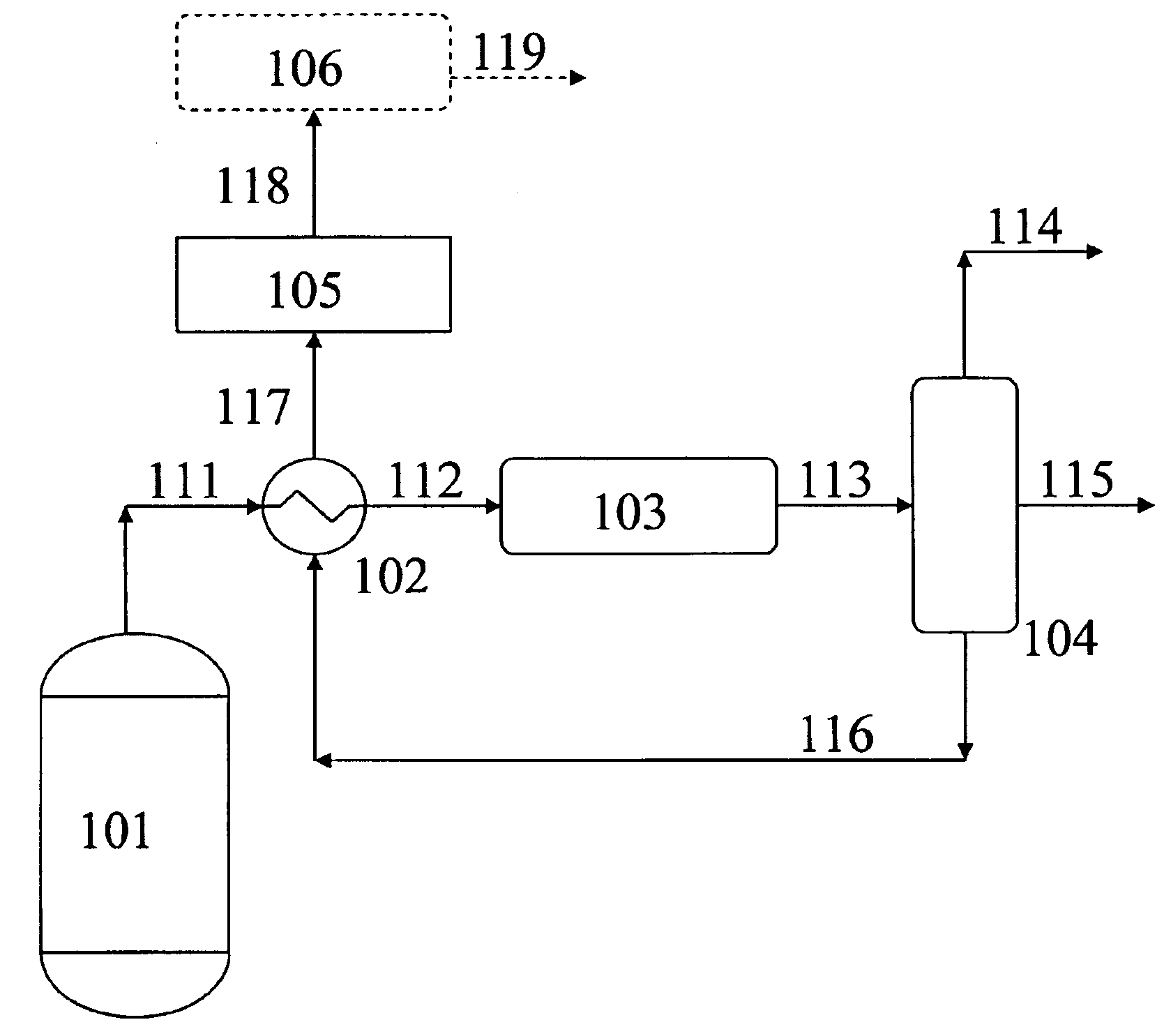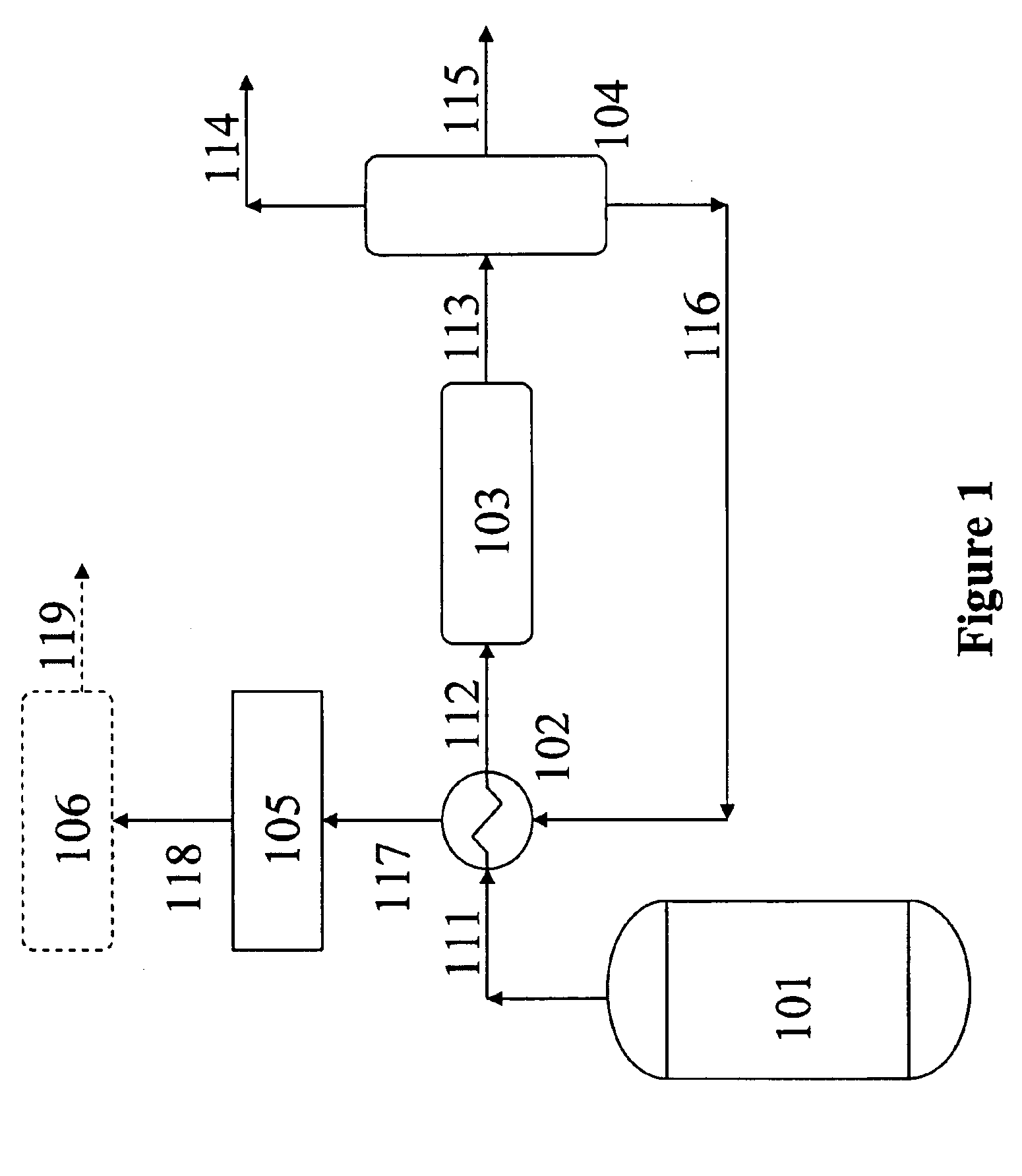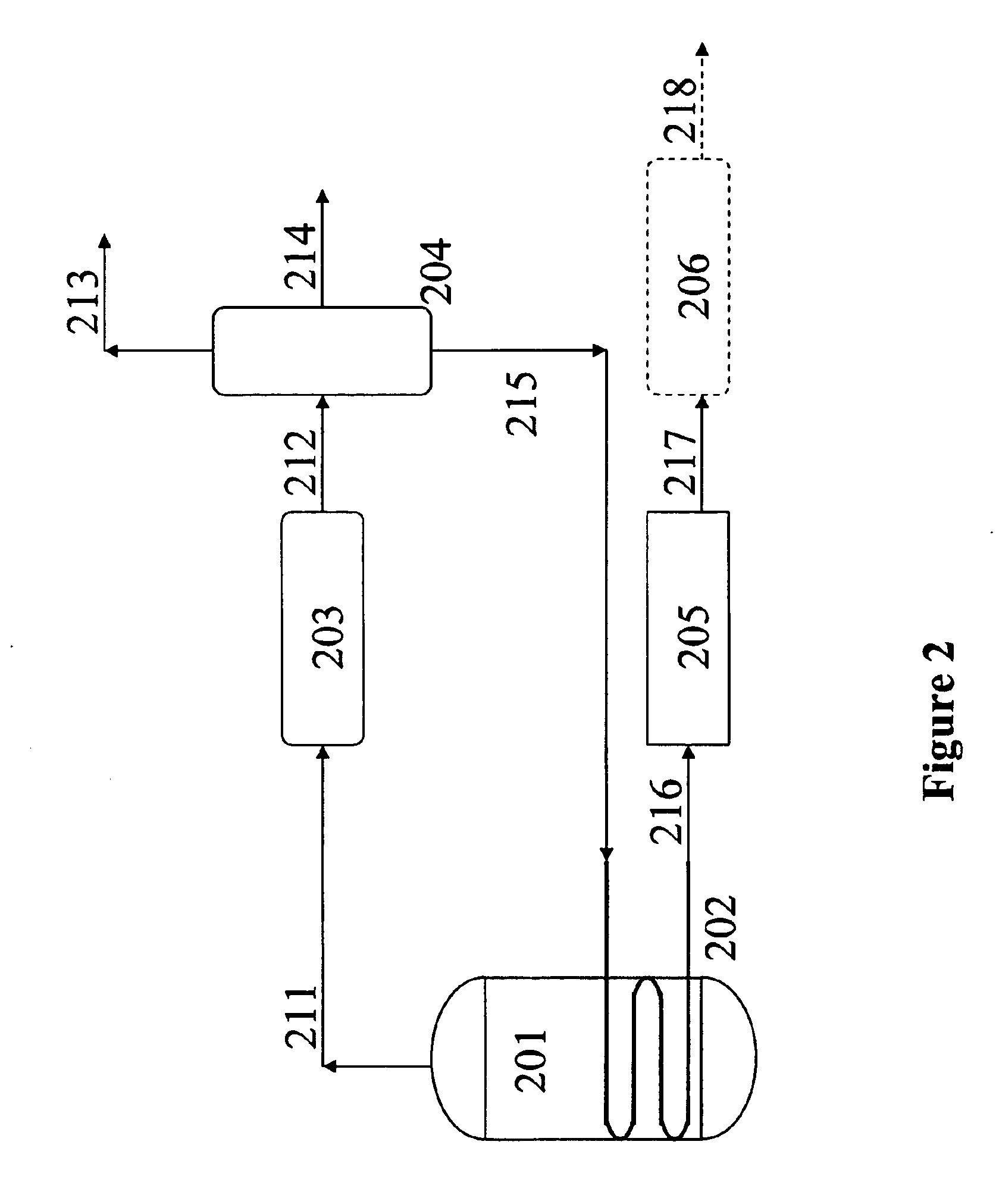Treatment of reaction water from a Fischer-Tropsch reactor
a reaction water and fischertropsch technology, applied in the direction of water/sewage treatment by oxidation, water/nature treatment water, oxygen-containing compound preparation, etc., can solve the problems of generating solid waste, affecting the efficiency of reaction water, and requiring further treatment of water product, etc., to achieve energy efficient, reduce costs, and reduce adverse environmental effects.
- Summary
- Abstract
- Description
- Claims
- Application Information
AI Technical Summary
Benefits of technology
Problems solved by technology
Method used
Image
Examples
Embodiment Construction
[0017]According to the present invention, water separated from a Fischer-Tropsch reaction product is vaporized, contaminants are thermally oxidized while in the vapor state, and flue gases may be condensed to recover water. The technique does not generate solid or liquid wastes.
[0018]The present invention provides methods of increased energy efficiency and cost effectiveness, as the energy required to vaporize the stream to be thermally oxidized is provided by earlier or later steps of the integrated process. Correspondingly, while some of the steps of the methods may be parallel to other steps of the method, the term “integrated,” as used herein, means that certain steps of the method are interrelated or somehow dependent upon either earlier or later steps of the total method.
[0019]In Fischer-Tropsch chemistry, synthesis gas (syngas) is converted to liquid hydrocarbons by contact with a Fischer-Tropsch catalyst under reactive conditions. Typically, methane and optionally heavier hy...
PUM
| Property | Measurement | Unit |
|---|---|---|
| temperatures | aaaaa | aaaaa |
| mole ratio | aaaaa | aaaaa |
| weight percent | aaaaa | aaaaa |
Abstract
Description
Claims
Application Information
 Login to View More
Login to View More - R&D
- Intellectual Property
- Life Sciences
- Materials
- Tech Scout
- Unparalleled Data Quality
- Higher Quality Content
- 60% Fewer Hallucinations
Browse by: Latest US Patents, China's latest patents, Technical Efficacy Thesaurus, Application Domain, Technology Topic, Popular Technical Reports.
© 2025 PatSnap. All rights reserved.Legal|Privacy policy|Modern Slavery Act Transparency Statement|Sitemap|About US| Contact US: help@patsnap.com



